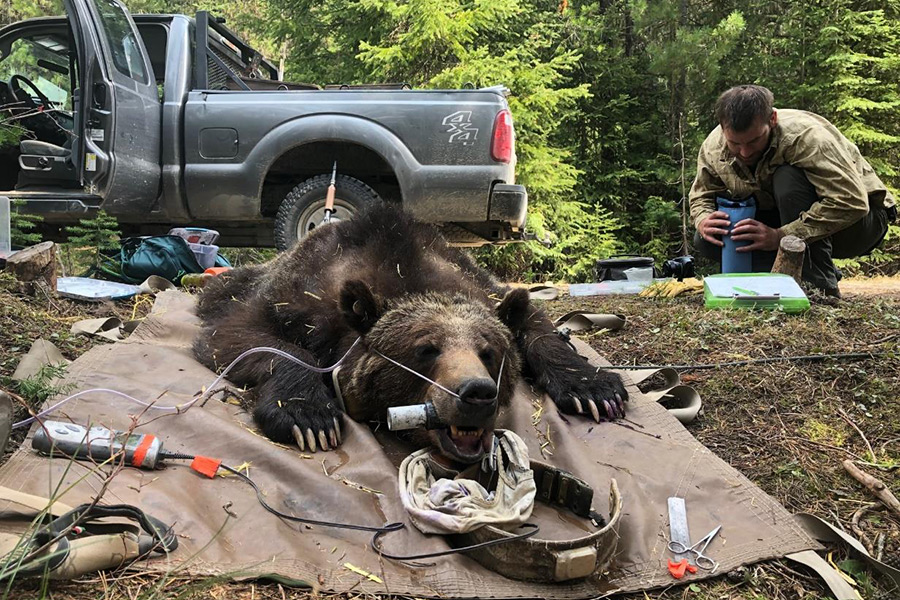Game Wardens Seek Information on Collared Grizzly Bear Shot in Cabinet Mountains
The adult male grizzly, which had no history of conflicts, was killed in Sanders County north of Noxon and had been collared for research purposes
By Tristan Scott
Game wardens with Montana Fish, Wildlife and Parks (FWP) and the U.S. Fish and Wildlife Service (FWS) are seeking information on a collared grizzly bear that was shot and killed in the Cabinet Mountains north of Noxon in Sanders County, according to a May 30 press release.
The adult male grizzly was discovered on May 24 along the South Fork of the Bull River, in an area near Berray Mountain, which is located off Forest Road 2272 (Berray Mountain Road). Wildlife officials investigating the scene determined the bear died of gunshot wounds, the release states, while mortality data from the tracking collar revealed it was killed on the evening of May 16.
Grizzly bears are protected as a threatened species under the federal Endangered Species Act and cannot be hunted in the Lower 48 states.
According to Wayne Kasworm, the FWS grizzly manager in Libby, the shot bear was 7 years old and had been captured, collared and ear-tagged last year. The bear was collared for research purposes as biologists monitor the population trends and genetic exchange of grizzlies in the Cabinet-Yaak and Selkirk recovery areas, which Kasworm said hold about 60-65 bears each in the remote mountains along the Canadian border with Montana, Idaho and Washington.
Those populations are dwarfed by the Northern Continental Divide Ecosystem, which has an estimated 1,100 grizzlies in the mountains between Glacier National Park and Missoula.
For the past 35 years, recovery efforts in the Cabinet-Yaak Ecosystem have included monitoring radio-collared individual grizzly bears in the isolated populations, tracking their genetic exchange through fur samples and augmenting the populations with transplanted grizzles from other recovery areas.
“Our ultimate goal is gene flow,” Kasworm said of the program. “It is one thing to see a bear move. But when we talk about productivity in recovery terms, we really want to see gene flow from one pop into another.”
Under Kasworm’s guidance, the Cabinet-Yaak augmentation program has helped rebound an ecosystem that saw its grizzly bear population nearly vanish. In 1988, biologists estimated fewer than 15 grizzly bears remained in the Cabinet-Yaak, which spans approximately 1,000 square miles in the Yaak River drainage and 1,620 square miles in the Cabinet Mountains.
Today, the recovery goal is 100 grizzly bears in the Cabinet-Yaak, and managers hope over time the animals will link with surrounding yet separate ecosystems: the Selkirks to the west, the Northern Continental Divide to the east, the Bitterroot to the south, and British Columbia to the north.
Understanding grizzly bear mortality is critical to puzzling out the formula to meet long-term recovery goals for the species, Kasworm said, and unnecessary mortalities are a setback in such fragile populations.
“Whenever there is something from a management standpoint that we can do to lessen the impact of necessary mortalities, we try to do that,” Kasworm said. “If someone kills a bear in the case of self-defense or protecting themselves, we count that as a necessary mortality. But if someone kills a bear out of malicious intent or due to mistaken identity, then that is unnecessary.”
Anyone with information is encouraged to call 1-800-TIP-MONT (1-800-847-6668). Callers can remain anonymous and may be eligible for a reward for information leading to a conviction.
“Wildlife crimes like this one are often solved because of leads provided by the public,” the release states.